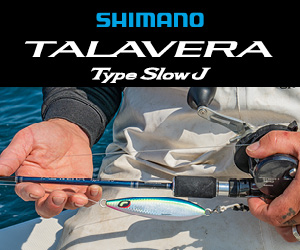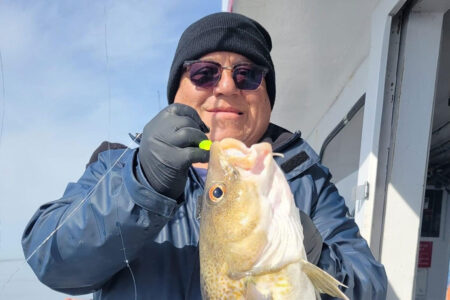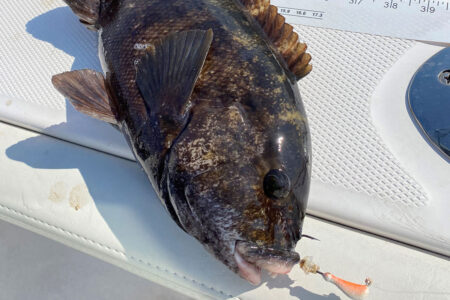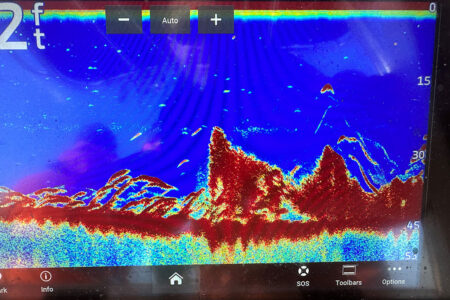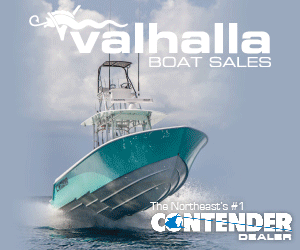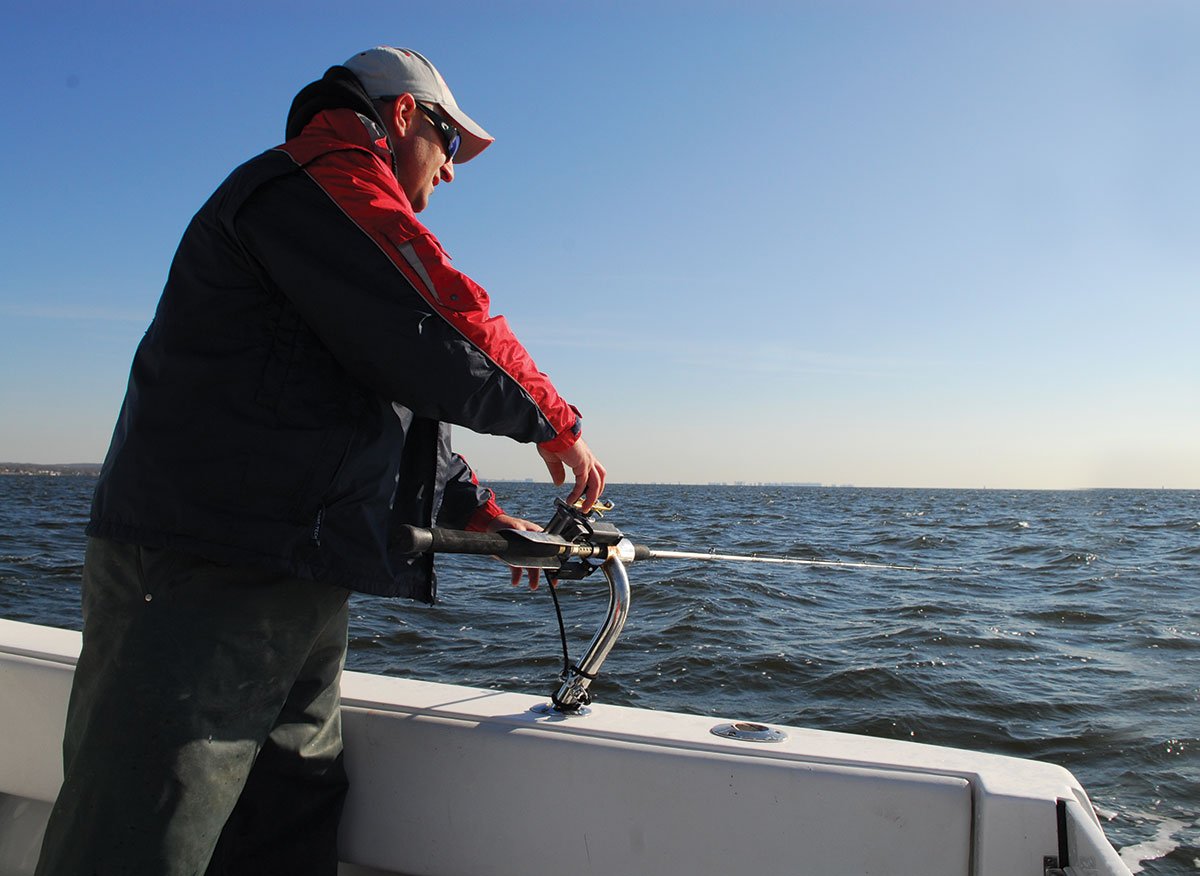
Are you geared up for today’s most popular trolling techniques?
Stripers are odd critters. Just when you think you have them figured out they change the game. As a result there are so many ways you can fish for them, all productive at one time or another that it pays to be prepared to use a variety of tactics every time you leave the dock.
Trolling is one of the most productive ways to catch bass. In fact I would say it is the single most consistent tactic and that is backed up by more than three decades pursuing them from boat and beach. I can’t tell you how many times I headed out with every intention of plugging, jigging or live lining when I had to fall back on the trolling gear to save the day.
Trolling is the great equalizer for novice bass fishermen or it can be an avocation unto itself. Someone new to bass fishing can purchase the right gear, learn some basics and put together a respectable catch on a consistent basis. Then there are accomplished striper fishermen who rarely do anything but troll, and many charter captains that earn their livelihood trolling during striper season.
The two most popular trolling methods fall into what I call “old school” and “new school” categories. Old school trolling is done with wire line, and new school is accomplished with outfits loaded with gel-spun braid. They require markedly different outfits, but I always have both on the boat and am ready to use them at a moment’s notice.
“Old School” Wiring
Wireline trolling has been around for over 100 years and it is more popular today than ever. It is consistently productive and accounts for an inordinate amount of big fish each season. The reason is one very special lure that works best with wire, the bunker spoon. We’ll look at the lure more closely in a moment, but you should understand why wireline trolling was developed in the first place.
Stripers spend the majority of their time on the inshore grounds in the bottom third of the water column. It’s where they go between active feeding forays, when traveling from one place to another and to scavenge along the bottom. Wire line is one of the earliest successful attempts at controlled depth fishing that allowed anglers to get their offerings to bass deeper in the water column. Wire offers a predictable rate of sink determined by how much is between the boat and the lure at the end of the line.
The accepted ratio of wire in the water to lure depth is 10-1. Put 150 feet out, the lure is tracking at about 15 feet; drop 300 feet and the lure is running around 25 feet. More than 300 feet reaches a point of diminishing returns as water resistance will begin to overcome the weight of the line and it just won’t go much deeper unless you add weight or slow your trolling speed to allow the lure to sink.
My wireline outfits are filled with 65-pound braid backing to almost fill the spool leaving enough room to top it off with a single 300-foot spool of 50-pound Monel wire. To attach it I use a 40 turn Bimini Twist in the braid to create an 18-inch loop and while the wire is still on the spool tie a haywire twist to create another shorter loop. Then I pass the braid loop through the haywire and around the spool of wire to create a simple loop-to-loop connection. Then the wire is wound tightly onto the reel.
At the end of the wire I wrap another haywire twist to attach an AFW Mighty Mini #5 crane swivel rated for 220-pound test that is small enough to fit through the carboloy guides on my bunker spoon rods. It’s finished with a 15-foot leader of 50-pound test mono or fluorocarbon that acts like a wind-on leader, which makes it easier to bring a fish to net. A large ball bearing snap swivel is used to attach the spoons.
To control the depth of your lures the wire has to be marked at intervals, a job that was a hassle until recently when Tony Maja Products (www.tonymajaproducts.com) introduced trolling pre-marked wire with different colored markers at 100,150, 200 and 250 feet. Tony has spent decades developing wireline trolling tackle for his own use and over the last 15 years has built a very successful company that offers everything you could need for this highly specialized technique from spoons and wire to rods, reels, terminal tackle, safety lines and more.
My wireline reels are a pair of Penn 113 HS Senators customized with Tiburon aluminum frames and power handles, but there are certainly other choices. I’ve owned a dozen different wireline rods, but of late the only ones that see action are Tony’s 8-foot bunker spoon rods, which are based on the original Harnell blanks that were the choice of old time bass trollers going back 50 years.
There are a number of companies making bunker spoons and I’ve fished with most, including a selection of spoons that haven’t been available for decades. My current favorites are Tony’s #2 and #4, but I have caught fish on all four sizes. All the colors work, too, but the mainstays are white, chartreuse and green. His spoons have a very gentle action compared to most and combined with the large, swinging single hook provide the best hookup ratio of any spoon I’ve found.
New School Plugging
I’ve spent a lot of time fishing with my friend, Capt. Brian Rice of Jersey Devil Charters, in Raritan Bay for early spring stripers over the years. We used to fish clams on the bottom when the water was still cold, but lately he has been using deep diving plugs, a “new school” trolling technique, earlier and earlier with excellent results. I’ve been using the same tactics out of Manasquan Inlet with a lot of success throughout the season. Even when I’m trolling wire I include one of these plugs down the center of the pattern. When the bass are in water less than 30 feet along the beach diving plugs are deadly.
This is another form of controlled depth fishing, but the lure is the controlling factor when used with the right line and the proper drop back. The most popular diving plugs for bass are the Rapala X-Rap Magnums, which come in 10-, 15-, 20- and 30-foot models, Mann’s “Stretch” plugs rated to run at 12, 15, 20, 30 and 40 feet, and the Bomber Certified Depth (CD) series that run at 25- and 30-foot models. One tip if it helps; these plugs all have charts with the original packaging with recommendations on boat speed vs. depth and line choice, which some folks tape to the inside of their tackle trays as a future reminder.
Brian fishes these plugs using Shimano Tekota 500 line counter reels mounted on Terez 7-foot MH rods. He loads them with 50-pound Power Pro Super Slick, adds a 6-foot, 50-pound test fluorocarbon leader and fishes them horizontal to the water from outrodders. He prefers heavier line because he fishes them very close to the bottom along channel edges and on shallow flats.
“If the water is 25 feet I’m running my plugs at 23 feet,” he said. “It takes a little practice, but with the line counter reels I place them at very specific depths by controlling the amount of line I let out.”
I fish diving plugs using a pair of 7-foot Lamiglas medium action rods with Penn 975LD reels using 30-pound Hi-Seas Grand Slam braid, but I’m fishing ocean waters and the plugs are frequently not as close to the bottom except in the fall when bass are on tight along the beach. Then I’ll troll along the outer bars setting the plugs to touch bottom and kick up a little sand from time to time. If the depth is around 20 feet I use a plug rated for 20 and simply drop it back until it’s ticking bottom. If you are more concerned about exact presentation you can load your reels with Power Pro Depth Hunter line that is marked at 25-foot intervals.
Get Your Mojo Workin’
An old school lure from Chesapeake Bay is being adopted by a growing cadre of trollers well north of Delaware Bay, as far north in recent years as the south shore of Long Island. It’s called the mojo, and is really nothing more than a large plastic paddle tail shad mounted on a very heavy jighead dressed with a reverse nylon skirt and a swinging hook.
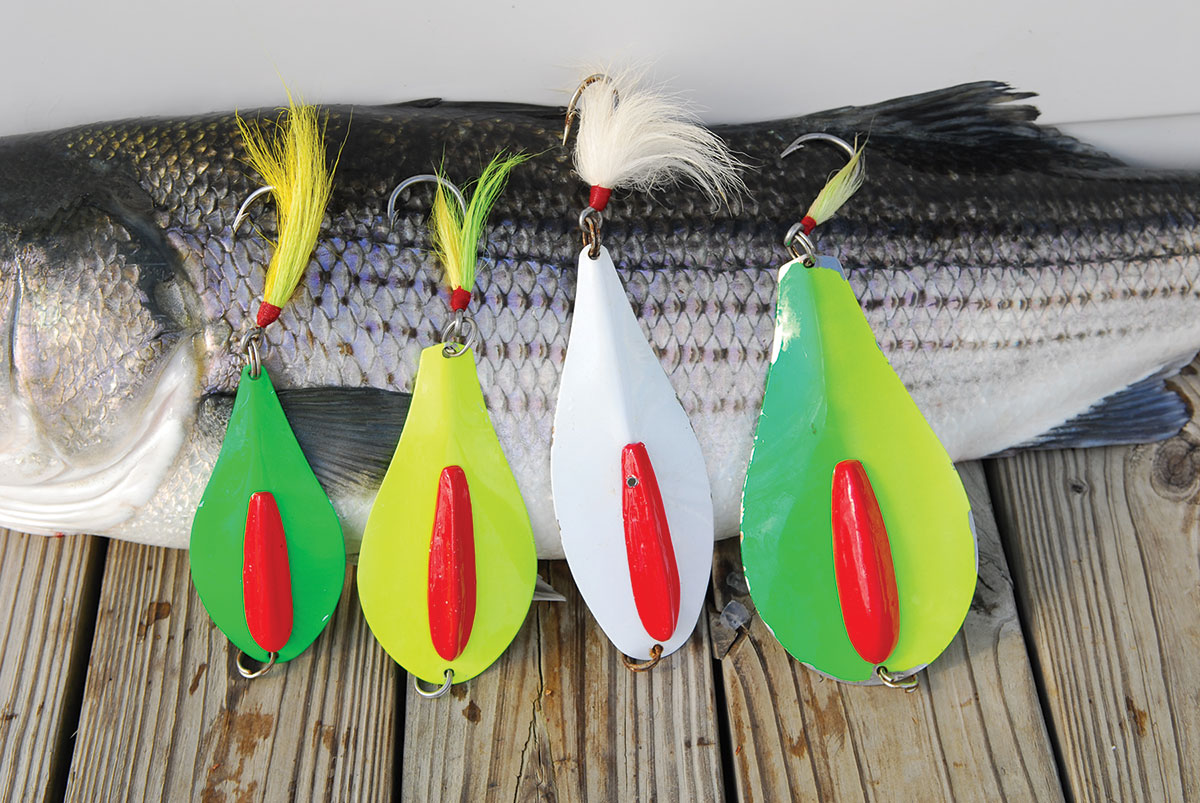
My first experience with them was on the Outer Banks trolling bass in January many years ago. After not seeing one for probably 15 years Rice surprised me last spring by pulling out a couple while fishing the south side of Staten Island. They were 24-ounce models and he had them on short, heavy action conventional rods loaded with 65-pound braid and 5-foot leaders. He proceeded to drop one back until it hit bottom, then brought it back up a couple turns of the handle and within seconds it was waffled by a striper.
Rice told me he started using them again because friends in South Jersey were catching some big bass on them; funny but just about the time wireline and bunker spooning is migrating southward into Delaware, Maryland and Virginia, this typically Mid-Atlantic technique is migrating northward through New Jersey into Long Island, perhaps soon enough into New England waters! It’s amusing that two distinctly regional old school techniques are being adopted by fishermen in areas where they had never gained popularity before.
This past fall I rigged up a heavier conventional outfit for adding a mojo to my trolling pattern. I found it’s simple to run a pair of bunker spoons from outrodders along with a mojo because the extreme weight of the lure gets it down closer to the boat so it’s nowhere near the spoons. I’ve even seen a mojo on the same line as a bunker spoon attached from a dropper on the leader where it serves two purposes. It is a lure capable of getting bit, but the weight also helps get the bunker spoons even deeper in the water column. Interesting concept, but I’m not ready to try that wrinkle quite yet. I used mojos in 24- and 32-ounce sizes in white and chartreuse and they produced some respectable stripers so I guess I’ll be keeping at least one mojo outfit on my boat along with my wireline and plug trolling rods.
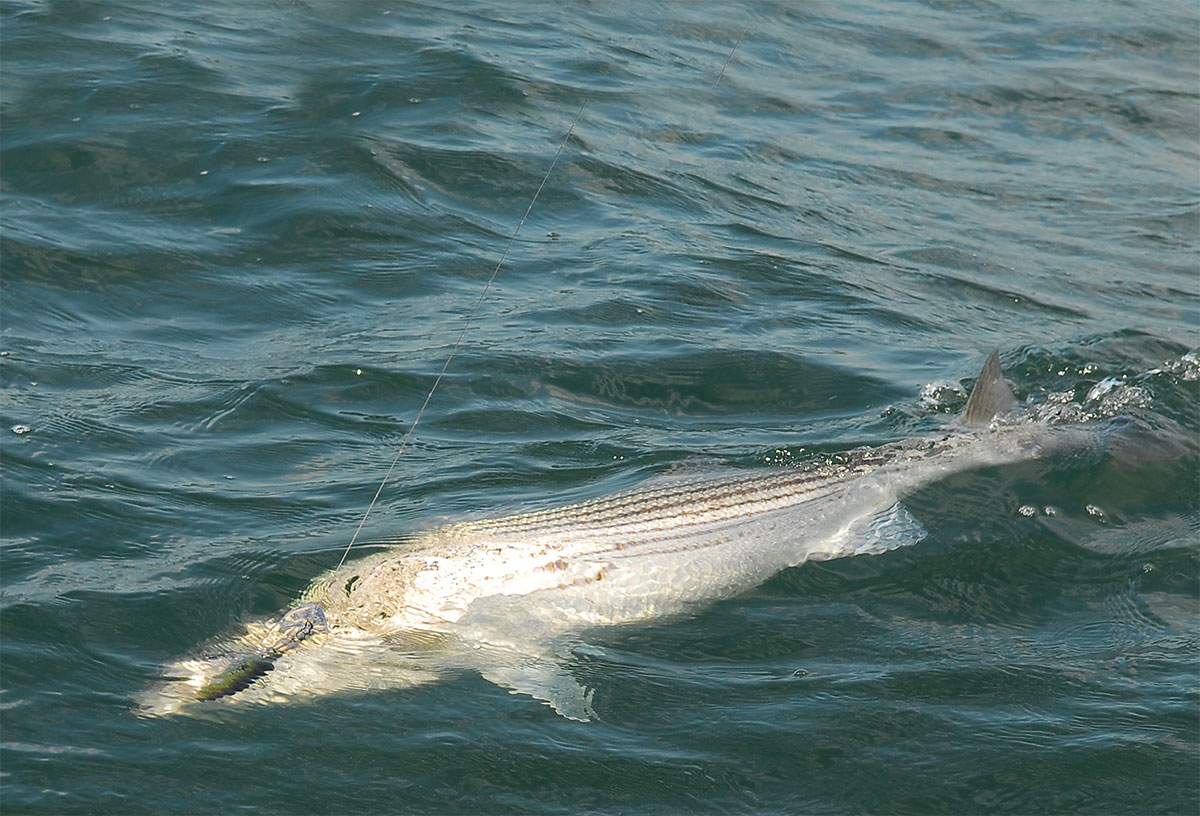
The thing to remember is that on any given day stripers might be showing a decided preference for one tactic over another. That’s why I keep a pair of wireline outfits with a selection of spoons and a pair of lighter outfits filled with braid for my box of X-Raps and Stretch plugs on the boat whenever I leave the dock to fish for striped bass. After last year I’ll have at least one conventional outfit capable of handling mojos in the mix, too.
Bottom line, there’s just no telling what you might need when you get out there and if it isn’t on board you lose.
